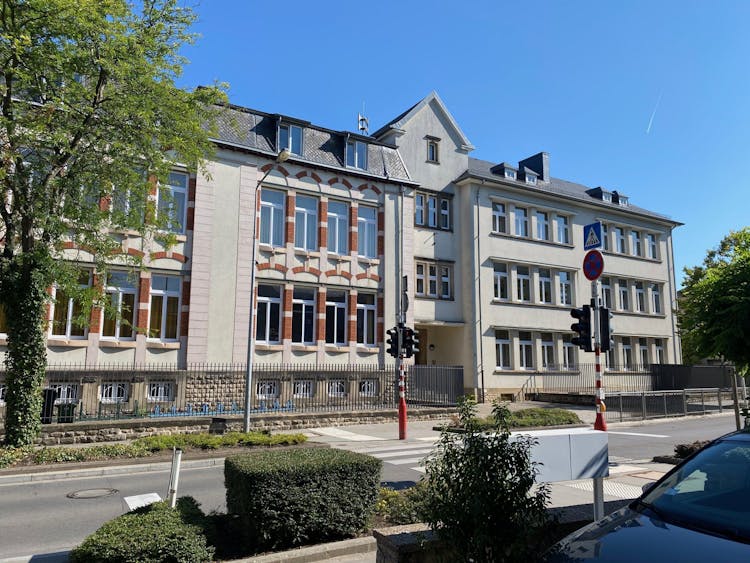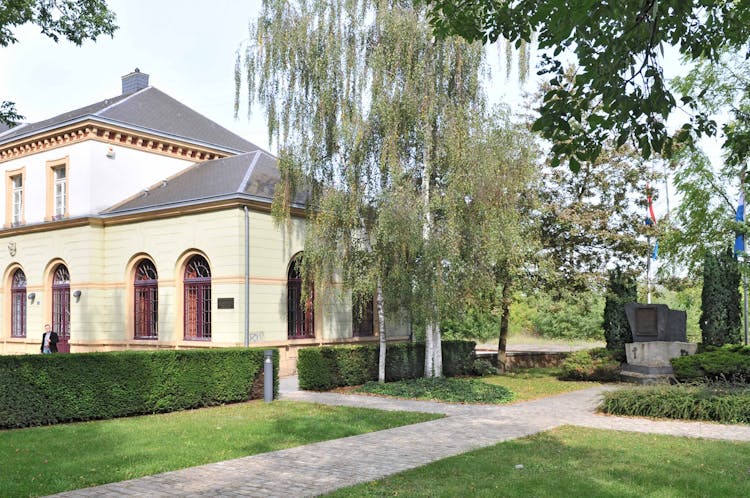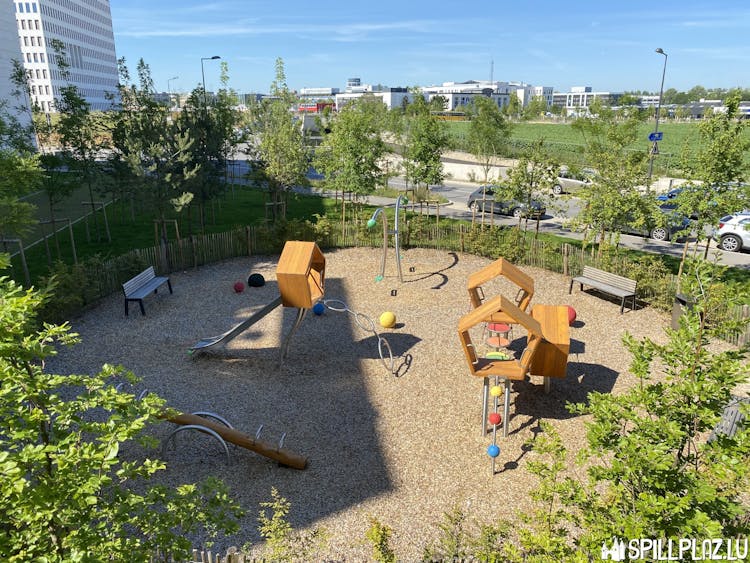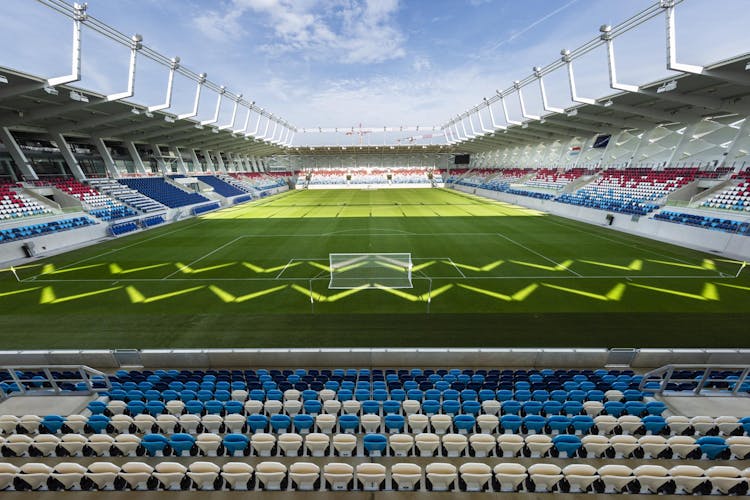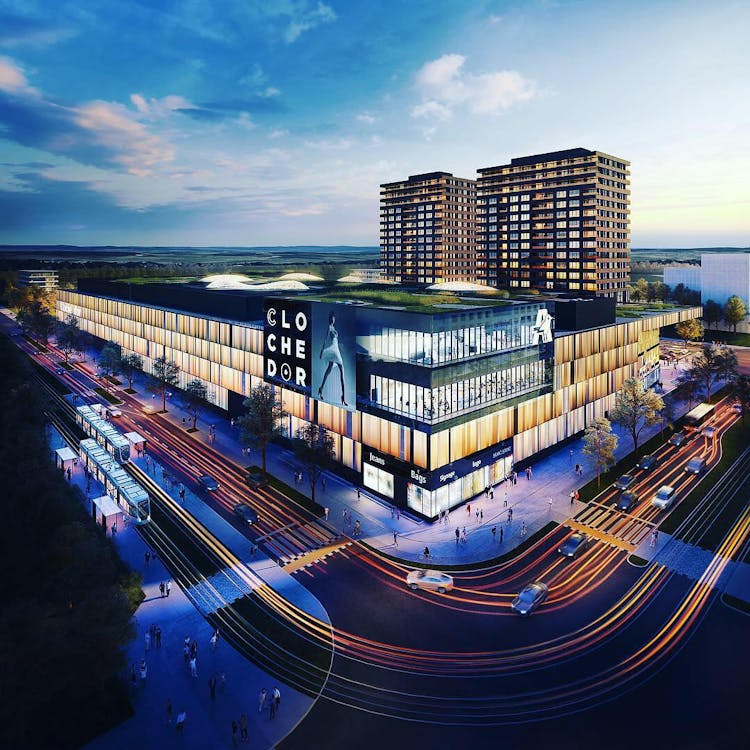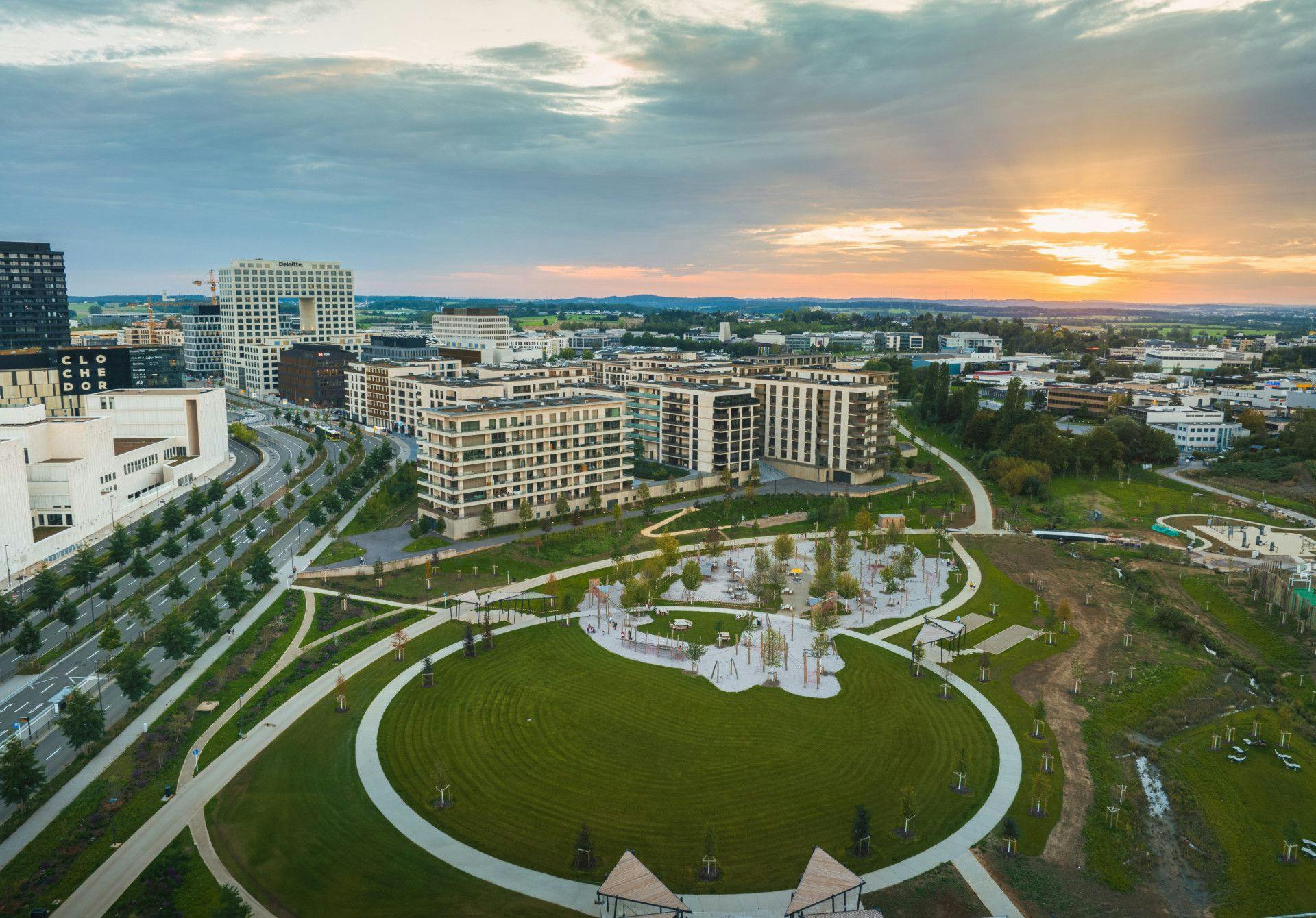
Gasperich: an urban green oasis with corporate buzz
In this article, we embark on a journey through the historical corridors, explore the vibrant population, weigh the pros and cons of residing in Gasperich, dissect the area's transport accessibility, take a closer look at its infrastructure, and navigate the nuances of renting and buying real estate.
The Gasperich neighborhood, nestled at the southern border of Luxembourg's capital, is a dynamic and diverse community with a rich tapestry of history and modern development. Bounded by Hollerich and Gare to the north, Bonnevoie-Sud to the east, and Cessange to the west, Gasperich stretches from the southern edges of Hollerich and Gare to the extreme south of the city.
General characteristics of Gasperich
Divided into three distinct parts, Gasperich offers a unique blend of old-world charm and contemporary living.
Areas of Gasperich
Gasperich stands out as a pleasant neighborhood, centrally located and experiencing a boom in Luxembourg. With numerous real estate projects and new businesses emerging, the district is becoming an increasingly attractive place to live and invest.



Population of Gasperich
As of January 1, 2024, Gasperich's population stands at 10,113 individuals, constituting 7.62% of the capital. With an expansive area of 445.14 hectares, it ranks as the fifth most populous neighborhood in Luxembourg City. Notably, Gasperich reflects a diverse demographic, with 72.11% of its residents being foreigners, slightly above the citywide average of 70.44%.
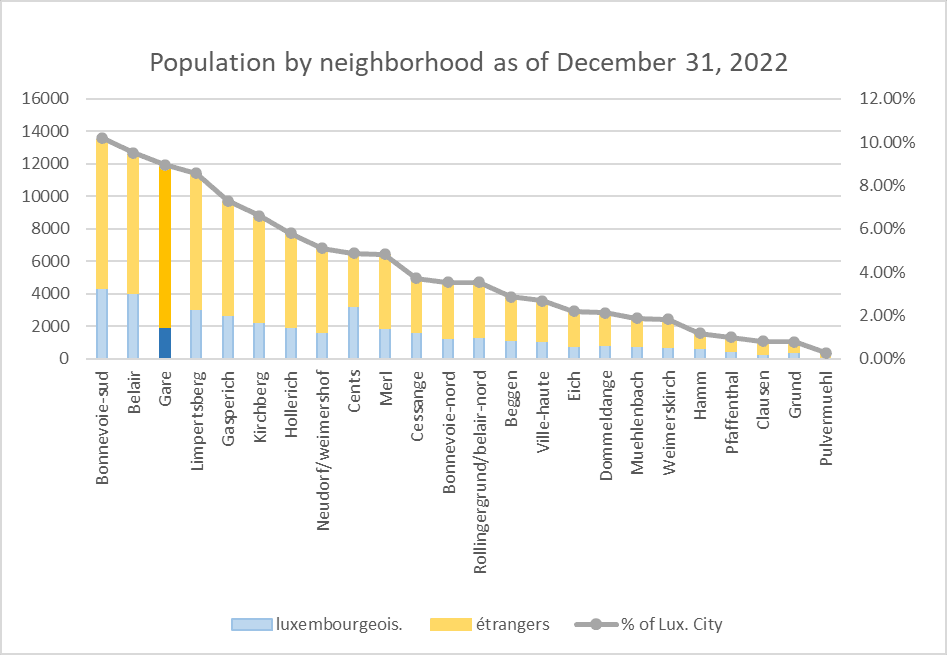
Transport accessibility
Gasperich, with its expansive layout, experiences varying distances depending on the starting point within the neighborhood. The ease of transport, however, remains a highlight, offering multiple options for residents.






Renting and buying real estate
Given the neighborhood's significant allure, rapid development, and the presence of numerous commercial, educational, cultural, and office infrastructures, real estate demand in Gasperich is robust.
Prices for property purchases are slightly above the capital's average, standing at 12,140 euros/m², compared to the city's average of 12,243 euros/m². For rentals, the trend continues, with prices at 33.45 euros/m², surpassing the citywide average of 30.72 euros/m².
For buying the average price is
For renting the average price is
Applications, search, and profound advice in our guide to renting
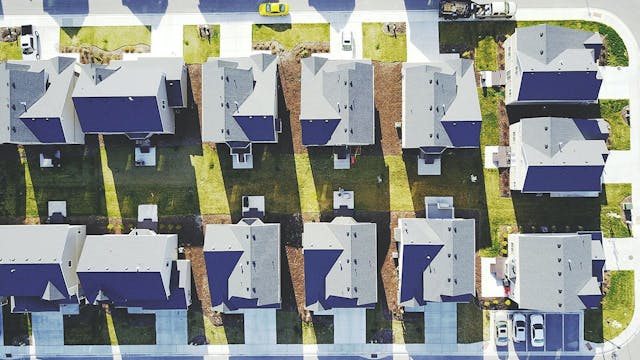
Infrastructure of the neighborhood
In the realm of education, the esteemed Lycée Vauban stands as a prominent institution, catering to primary and secondary levels. For recreation, the expansive Ban de Gasperich Park provides a verdant escape, while the dynamic La Cloche d'Or sector transforms the landscape with a mix of office and residential buildings. Notable corporate giants like PWC, Deloitte, and Alter Domus contribute to the area's economic vitality.
Sports enthusiasts find a haven in the multifaceted sports facilities, with the Luxembourg National Stadium serving as a jewel in the crown. Gasperich seamlessly blends education, recreation, business, and sports, creating a vibrant and well-equipped neighborhood for residents and visitors alike.
If you're considering making Luxembourg your new home, we encourage you to explore our range of articles that look in depth at the different city communes and neighborhoods.
Pros and cons of living in the Gasperich neighborhood
Living in Gasperich comes with several advantages, prominently anchored in its strategic location and comprehensive infrastructure. Proximity to major highways facilitates easy connectivity, while the presence of a well-rounded infrastructure, featuring residential zones in the north and commercial areas in the south, enhances the neighborhood's appeal.
A significant positive aspect is the thriving Cloche d'Or commercial and business area, housing major corporations like PWC, Deloitte, and Alter Domus. The Cloche d'Or shopping center stands out, providing an unparalleled shopping experience for residents.
Another noteworthy advantage is the recently inaugurated Ban de Gasperich Park, the country's largest green space. This expansive park not only offers a natural retreat but also fosters a strong connection with nature for residents.
However, it's essential to consider the drawbacks. The real estate market, particularly rental prices, is considerably high, surpassing the citywide average. Additionally, the neighborhood's slight distance from the city center may pose a challenge for those preferring pedestrian commutes, and public transport journeys to distant areas, such as the Kirchberg business district, can be time-consuming. Nevertheless, the upcoming tram extension to La Cloche d’Or is anticipated to significantly alleviate this concern, enhancing the overall living experience in Gasperich.
What is there in this quartier of Luxembourg City?
Gasperich epitomizes a neighborhood with an all-encompassing infrastructure, offering a diverse and thriving community experience.
Gasperich boasts a diverse array of educational institutions, providing residents with a comprehensive range of options. The Gasperich Public School caters to primary education, while the expansive Lycée Vauban offers both primary and secondary education, accommodating approximately 2,500 students in modern facilities spanning 47,000 m².
For younger children, there are two public childcare centers and numerous nurseries, including La Luciole Nursery, Barbara Nursery, Babyhome Gasperich Nursery, KidsCare Cloche d'Or Père Raphaël Nursery, Nursery Les Prés En Bulles, and L'enfant Roi Dyapason Nursery.
The European Institute of Excellence Business School (EIEBS) also enhances the educational landscape, providing university-level education within the neighborhood.
Gasperich primary school
Childcare center
Lycée Vauban
European Institute of Excellence Business School (EIEBS)
La Luciole Nursery
Barbara Nursery
Babyhome Gasperich Nursery
KidsCare Cloche d'Or Père Raphaël Nursery
Nursery Les Prés En Bulles
L'enfant Roi Dyapason Nursery: Address
While Gasperich doesn't host an extensive array of cultural centers, a notable establishment lies to the north of the neighborhood. The Hollerich train station houses a permanent exhibition on Luxembourg during World War II, offering insight into the country's history during the Nazi occupation (1940-1945). During this period, Hollerich station played a pivotal role as a gathering and departure point for young Luxembourgers forced into German labor service ("RAD") and military service. Additionally, it served as a departure point for trains carrying Luxembourger Jews to concentration camps.
Learn more about Luxembourg's culture and traditions in our special guide.
The station's historical significance is further commemorated by two memorial associations, the "Fédération des Enrôlés de Force (FEDEF)" and the "Fondation du Mémorial de la Déportation," both headquartered in Gasperich.
Hollerich Deportation Memorial
Address: 3a Rue de la Déportation, Gasperich Luxembourg, Phone: (+352) 24 78 81 91, Website: lcto.lu
While Gasperich lacks hospitals or clinics, residents can swiftly access city hospitals by car, with public transportation also providing convenient but slightly lengthier options. Here are directions and distances to some of the city's major hospitals:
- Clinique Zitha: 20-30 Rue d'Anvers (average time: by car — 15 minutes; bus — 15-20 minutes);
- Kirchberg Hospital: 9 Rue Edward Steichen (average time: by car — 15-20 minutes; bus — 40-45 minutes);
- Centre Hospitalier de Luxembourg: 4 Rue Nicolas Ernest Barblé (average time: by car — 15 minutes; bus — 20-30 minutes);
- CHL Eich: 78 Rue d'Eich (average time: by car — 15-20 minutes; bus — 20-40 minutes).
For immediate pharmaceutical needs, two nearby pharmacies, Pharmacie de Gasperich on Rue de Gasperich and Pharmacie de la Cloche d'Or near the shopping center, cater to residents' requirements.
You can read more about urgent healthcare in our dedicated article: Emergency medical help in Luxembourg: ambulance and hospitals.
Gasperich is distinguished by its abundant green spaces, featuring the quaint Jardin Anglais on Rue de la Déportation and, further south, the city's largest park, Ban de Gasperich. The Ban de Gasperich Park, inaugurated in June 2023, spans nearly 16.6 hectares, offering a rejuvenated Drosbach stream over 810 meters, a 7,000 m² pond, expansive playgrounds, a multisport area, petanque and beach volleyball courts, a fitness zone, recreational lawns, late-cut meadows, alluvial forest, and marshy areas, a comprehensive recreational haven.
To the south of the neighborhood lies the Kockelscheuer Forest, a vast green expanse providing a nature retreat. Popular for bird watching, locals and tourists alike engage in various activities such as jogging, hiking, and cycling in this serene woodland setting.
Additionally, Gasperich boasts numerous children's playgrounds scattered throughout the neighborhood, ensuring ample recreational opportunities for the younger residents. The combination of Ban de Gasperich Park, Kockelscheuer Forest, and these playful spots contributes to Gasperich's appeal as a green and family-friendly neighborhood.
- Kockelscheuer forest : Kockelscheuer, Luxembourg
- Park Ban de Gasperich: Address: 27 Rue Richard Wagner, Gasperich Luxembourg
- Jardin Anglais: Address: Address: 2 Rue Jean-Gaspard de Cicignon, Gasperich Luxembourg
- Playground at the primary school: Address: 46 Rue de Gasperich, Gasperich Luxembourg
- Herbert Schaefer Playground: Address: 17 Rue Herbert Schaefer, Gasperich Luxembourg
- André Chevalier Playground: Address: 38 Rue Henri Pensis, Gasperich Luxembourg
- Aristide Playground: Rue Aristide Briand, Gasperich Luxembourg
- Charles Darwin Playground: Rue Charles Darwin, Luxembourg
Gasperich offers a diverse range of sports facilities, catering to various interests and age groups. The Emile Bintner Stadium, featuring two football fields, serves as the home ground for FC Tricolore Gasperich. Adjacent to the stadium, sports enthusiasts can enjoy a Skatepark and a basketball court.
A multipurpose sports hall is available within the premises of the primary school, primarily accessible to official schools and clubs in the city. Further south, near the Kockelscheuer Forest, the Kockelscheuer Ice Skating Rink provides a delightful venue for both casual outings with friends and structured activities like skating courses and tournaments.
The crown jewel of Gasperich's sports infrastructure is the Luxembourg National Stadium. Inaugurated in 2021, this modern stadium boasts a capacity for 9,385 spectators and serves as the home ground for the national football and rugby XV teams. Classified as a UEFA Category 4 venue, the stadium is equipped to host international matches, enhancing Gasperich's reputation as a hub for diverse and top-notch sports facilities.
Skatepark
Tennis Club Gasperich
Hall omnisports
Stade Emile Bintner
Kockelscheuer Ice Rink
Luxembourg Stadium
At the pinnacle of Gasperich's comprehensive infrastructure stands the Cloche d'Or Shopping Center, Luxembourg's largest. This colossal retail hub, inaugurated in 2019, spans 75,000 m² across three floors, hosting a plethora of shops and restaurants. Boasting an Auchan hypermarket, a gallery with 130 retail outlets and dining establishments, and ample parking space with 2,800 spots, the Cloche d'Or Shopping Center is a recent addition that enhances Gasperich's reputation as a vibrant and well-equipped neighborhood.
Shopping Center Cloche d'Or
Address: 25 Bd Friedrich Wilhelm Raiffeisen, Gasperich Luxembourg, Phone: (+352) 27 04 53 53, Website: cdo.lu
Historical overview
Gasperich, once a rural expanse, has a rich historical tapestry dating back to Roman times when it housed several farms known as villas. Two millennia ago, Gasperich was strategically located near two Roman roads, including the renowned "Stengesche Wee," a trade route linking the ancient settlement of Dalheim's plateau to the Roman road from Arlon to Trier.
Benedictine Abbey
Brick factory in Gasperich
Frequently Asked Questions (FAQ)
What is La Cloche d'Or, and how does it contribute to the neighborhood's lifestyle?
La Cloche d'Or is a vibrant sector in Gasperich that significantly enhances the neighborhood's lifestyle. It features a diverse mix of office and residential buildings, creating a dynamic urban environment. La Cloche d'Or is attracting major corporations like PWC, Deloitte, and Alter Domus, contributing to the area's economic vitality. The sector also houses Luxembourg's largest shopping center, providing residents with extensive retail options, further enriching the neighborhood's lifestyle offerings.
What recreational areas and parks are present in the neighborhood?
Gasperich offers a wealth of recreational spaces, enhancing the residents' quality of life. The Ban de Gasperich Park, inaugurated in 2023, stands out as the largest public green space in the city, featuring playgrounds, a fitness area, sports facilities, and serene natural elements. Additionally, the Jardin Anglais and the expansive Kockelscheuer Forest provide alternative options for residents to enjoy outdoor activities, creating a well-rounded and inviting environment for leisure and relaxation.
What are the pros and cons of living in Gasperich?
Living in Gasperich comes with several advantages, such as its strategic location with proximity to major highways, comprehensive infrastructure, and the presence of the vibrant La Cloche d'Or sector. The Ban de Gasperich Park and Kockelscheuer Forest contribute to the neighborhood's green appeal. However, potential drawbacks include high real estate prices, particularly in rentals, and the neighborhood's slight distance from the city center, impacting pedestrian commutes. The upcoming tram extension is anticipated to alleviate this concern, offering a balanced living experience.
How is the transportation accessibility in Gasperich?
What are the real estate prices like for buying and renting in Gasperich?
Source: fr.wikipedia.org, www.vdl.lu, www.justarrived.lu, www.luxembourg-city.com, www.republicain-lorrain.fr, www.luxembourg-city.com, lequotidien.lu, fr.wikipedia.org, www.immotop.lu
We took photos from these sources: Luxembourg City Website, Wikimedia, Luxembourg City Website, Spillplaz, Luxembourg Stadium website, Cloche d'Or Experience Facebook Page
